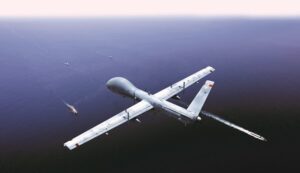World’s most compact and advanced DIRCM System to be installed on IAF Apache
BIRD Aerosystems announced on September 8 a significant milestone with a contract from the Israeli Ministry of Defense (DDR&D) for the development, installation and testing of its Airborne Missile Protection System (AMPS), including its recently developed µDIRCM solution on the Israeli Air Force’s Apache helicopter. The system is developed in collaboration with the Directorate of Defense Research & Development (DDR&D) of the Israeli Ministry of Defense.
Under the agreement, BIRD will develop, integrate, deliver and test its AMPS solution, incorporating the world’s most compact and advanced DIRCM, ensuring full protection of IAF’s Apache helicopter against modern ground-to-air threats.
BIRD’s patented µDIRCM is the world’s lightest, smallest and most advanced multi-functional solution, combining missile detection, confirmation, tracking, and laser jamming within a single unit. It achieves near-zero false alarms and offers unmatched capabilities in threat engagement.
“This is a major milestone for BIRD Aerosystems,” said Matan Perry, VP Marketing & Sales at BIRD Aerosystems. “We are proud that the Israeli Air Force – one of the most advanced air forces in the world – has chosen our newest DIRCM to protect its AH-64. Our solution combines cutting-edge technology in the world’s most compact and lightweight DIRCM system, delivering unmatched protection facing today’s threats. We witness an increasing worldwide demand for self-protection system, even for small platforms.”
Ronen Factor, Co-Chief Executive Officer and Co-Founder of BIRD Aerosystems, stated: “It is a great personal and professional privilege for my Co-CEO David Dragucki and me to lead the company now selected to equip Israeli Air Force’s AH-64A with the most advanced airborne protection systems available today. This strategic program, in partnership with the Ministry of Defense and DDR&D, reflects both our deep commitment to national defense and our proven capabilities in delivering mission-critical technologies that meet the most demanding operational needs.“







